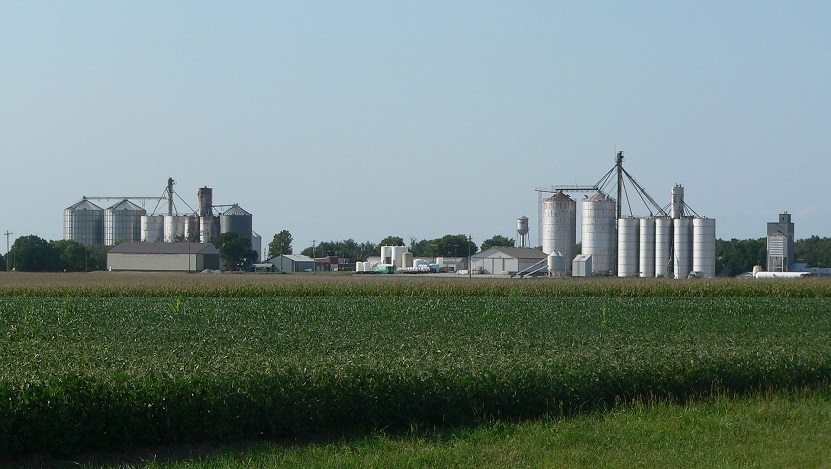“Two Nebraska workers have lost their lives in 2016 in the grain handling industry and far too many preventable fatalities and injuries continue to occur.” Jeff Funke, OSHA area director-Greater Omaha Area
The Bureau Labor of Statistics attributes workplace injuries and illnesses to one of seven events or exposures. One of the seven, overexertion, is never listed for fatal injuries. Apparently, we don’t overexert ourselves to death. The other six—transportation incidents; slips, trips, and falls; workplace violence; contact with objects; fires and explosions; and exposure to harmful substances or environments—are all causes of workplace fatalities.
The two leading causes of workplace fatalities are transportation incidents and workplace violence, accounting for almost 60% of all workplace fatalities. These are two areas where OSHA has not issued any regulations.
OSHA Press Releases
Whenever OSHA issues a press release following their investigation of a workplace fatality, they invariably blame the fatality on a failure to comply with regulations. The implication is that not only are all workplace fatalities preventable, but that complying with all regulations will prevent all workplace fatalities. A review of the associated citations—there are always associated citations—shows that many of the infractions have nothing to do with the fatality in question. The question is whether regulatory compliance avoids accidental workplace fatalities or simply avoids a citation.
OSHA does issue and enforce regulations to address the causes of over 40% of workplace fatalities. One of those regulations is the grain handling facilities standard, 29 CFR 1910.272. While the grain handling facilities standard does not address transportation incidents, workplace violence, or slips, trips, and falls, it explicitly addresses contact with equipment, fires and explosions, and exposure to harmful substances or environments.
Two Recent Grain Handling Fatalities
An employee at a facility in Prosser, Nebraska was clearing grain from a bin’s walls on March 16, 2016 when the operating, unguarded auger caught his lifeline and pulled him in. Unlike a fatality in the blast of an industrial explosion, being killed by an unguarded auger is neither quick nor painless. The employee knew what was happening as the auger dragged him in, eventually suffocating him.
Another fatality in a grain bin occurred on May 18th at a facility in West Point, Nebraska while an employee was clearing grain along the sides of a bin. The grain gave way and engulfed the man in hundreds of pounds of grain. Asphyxiation by nitrogen or carbon monoxide is relatively peaceful. Deprived of oxygen and with no accumulation of carbon dioxide to trigger a response, the victim drifts off to death. Asphyxiation by grain, however, is not peaceful. The victim is completely aware that grain has filled his mouth and nose, and dies gasping for air.
The Nebraska fatalities both occurred inside grain storage bins. The standard covers training employees on entry into grain storage structures. It specifically requires that grain facility workers get training on how to enter and work in these structures safely. Apparently, this was not the case for these two workers. Either they did not have full understanding of the hazards to which they were being exposed, or lacked appreciation for how serious the hazards were.
An Unguarded Auger
There was a time when workers at grain handling facilities were expected to work around unguarded floor augers in grain storage bins. A certain number of fatalities were simply considered “acceptable losses.” The grain handling facilities standard addressed this hazard directly and explicitly. When there is a danger presented by moving equipment, such as an auger, then that danger needs to be dealt with by means of deenergizing that equipment, blocking it off such that the employee cannot come in contact with the auger, or any equally effective method for preventing operation. OSHA made no bones about the regulation being a change to the status quo, and made it very clear that they expected employers operating grain handling facilities to comply. The auger should have been off, locked out, and tagged out before the worker ever entered the bin.
Death by Engulfment
Workers at grain handling facilities are still expected, on occasion, to enter grain storage bins to knock the grain clinging to the walls loose. However, workers are only supposed to enter the bin from above the grain, sitting in a boatswain’s chair if necessary, so that if the grain wall collapses, they are not engulfed. Under no circumstances is a worker ever supposed to enter a grain storage bin underneath grain bridging conditions or where a buildup of grain on walls could fall and bury them.
The Standard Matters
The grain handling facilities standard is not just a regulation that OSHA put in place to make life difficult for the grain handling industry. It matters. If these two facilities had been following the grain handling standard, these are two fatalities that would have been avoided. OSHA’s press release boilerplate, that these were “preventable fatalities,” is true.
Follow the Standard
No one starts their day with the intention of ending it with a fatality or serious injury. While there may be some OSHA regulations with which we comply for no other reason than to avoid a citation, many of OSHA’s regulations serve to protect workers from serious hazards. They are rules we should follow even if they weren’t regulations. You can often get away with cutting corners, but often isn’t always. Often isn’t good enough when we’re talking about dying on the job.
So, follow the standard. Make sure that you understand the hazards they address, and that the people you work with also understand the hazards. Then always act as if this is the time that non-compliance will get someone killed. Because it might be.
